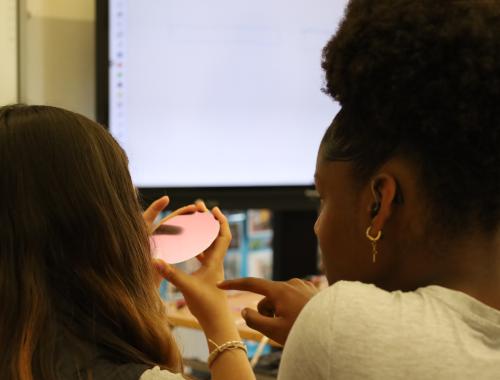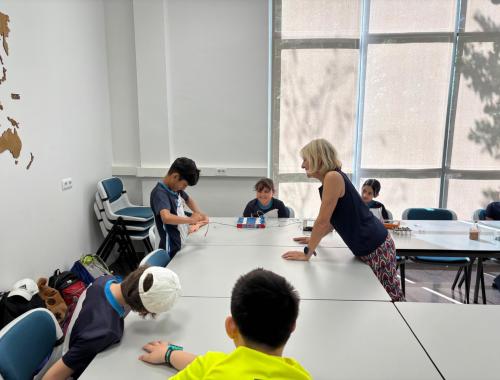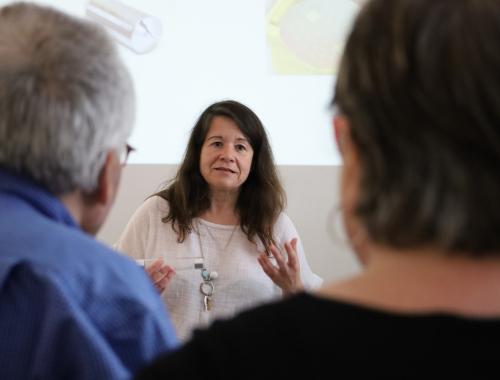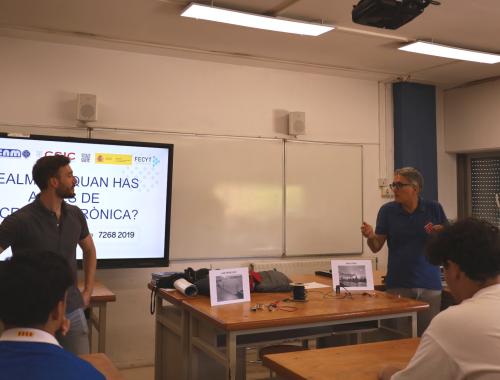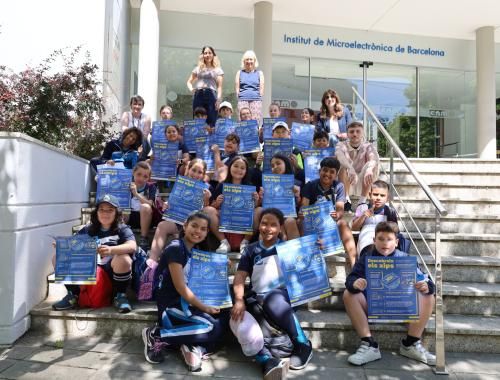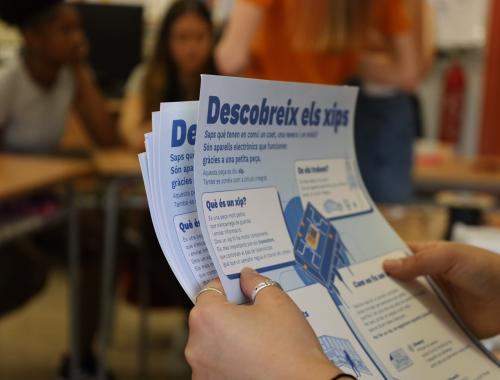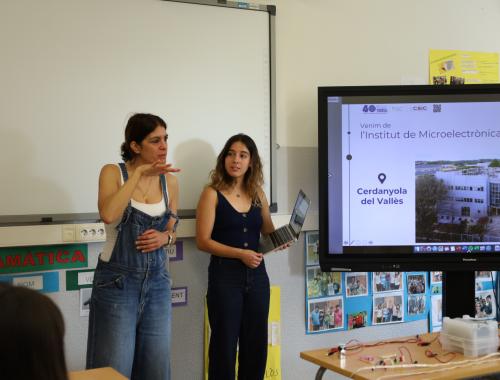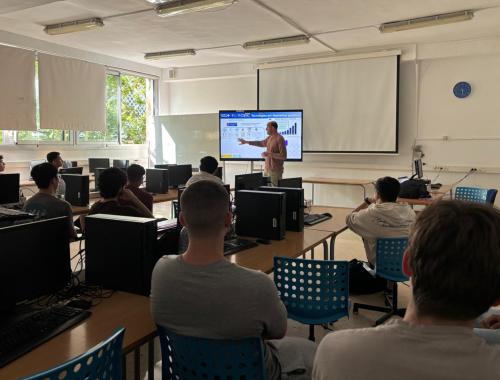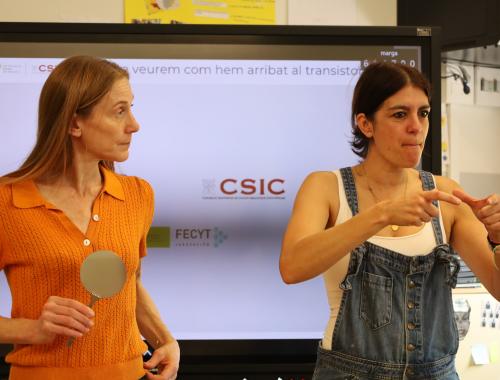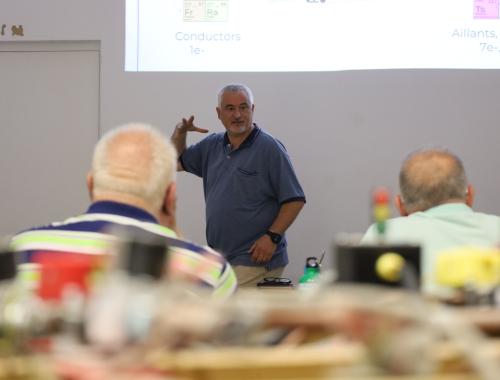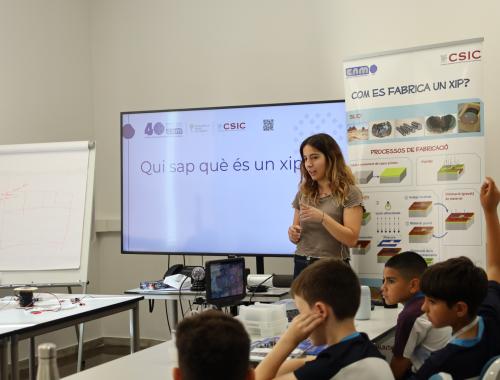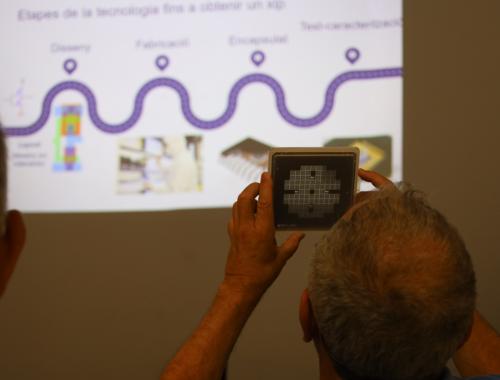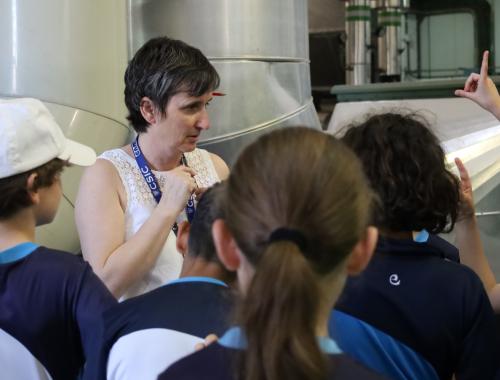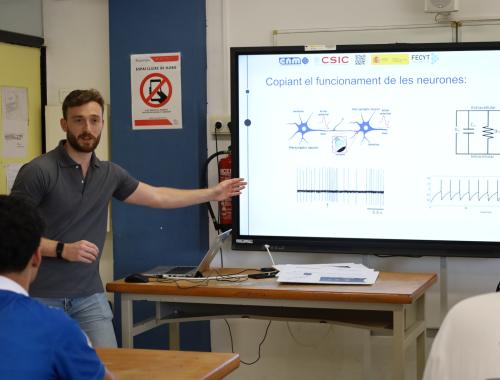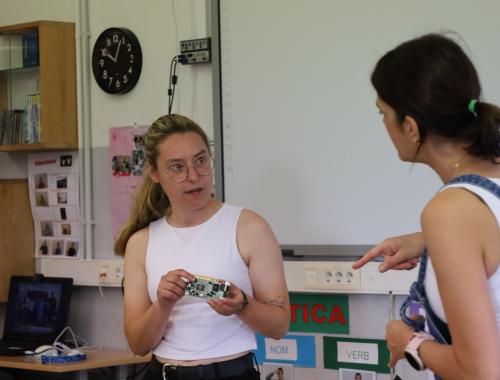Over 450 people discover the world of integrated circuits thanks to CHIPS project
The IMB-CNM has already carried out most of the planned actions within the initiative, including in-person workshops, infographics, and the distribution of educational materials to institutions across Spain, bringing microelectronics closer to the public
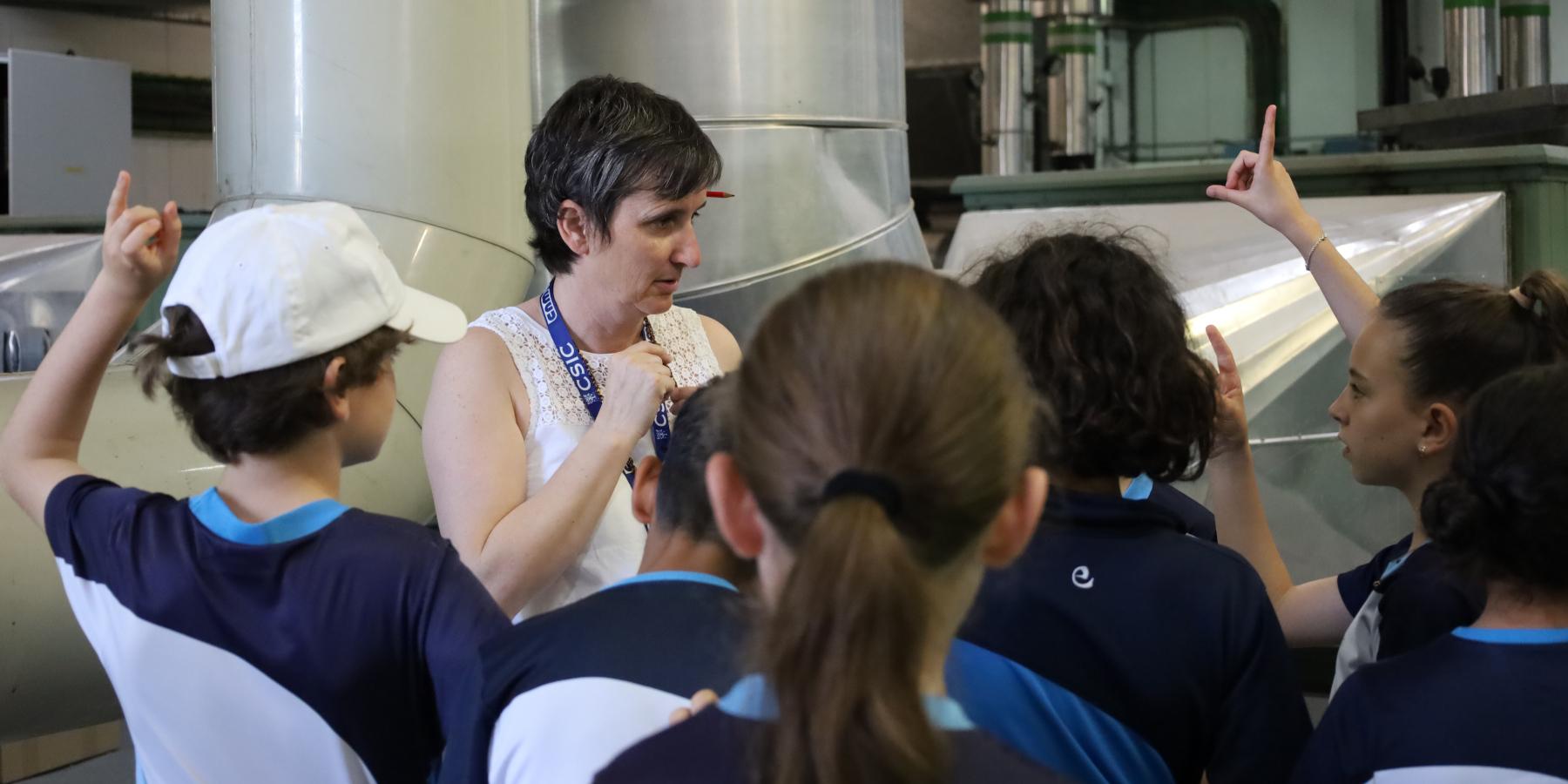
The project CHIPS: Un viaje por el circuito integrado, coordinated by the Institute of Microelectronics of Barcelona (IMB-CNM, CSIC) and in collaboration with the Fundación Española para la Ciencia y la Tecnología · Ministerio de Ciencia, Innovación y Universidades, has already completed most of its planned activities. These include outreach workshops, visual resources, and the distribution of educational materials throughout Catalonia and the rest of Spain. More than 450 people have participated in over 10 organized workshops, aimed at a diverse audience: children, adults, and people with functional diversity.
CHIPS has three main lines of action: the creation of educational infographics and their distribution to schools, the implementation of adapted workshops, and the production of animated videos explaining how a chip is made. Currently, the infographics are available online (in Spanish and Catalan), with three age-specific versions and one in easy-to-read language. Printed versions have also been sent to schools in Catalonia and the rest of Spain, selected randomly from public schools in rural towns, such as Torroella de Montgrí and Almodóvar del Campo, both with fewer than 10.000 inhabitants. The videos, which began with the photolithography process, are currently in the animation phase, with the following episodes soon to be released. In the coming months, more details will be shared about stages such as design, deposition, and characterization of a chip or integrated circuit.
Lastly, 14 workshops were held during the academic year: three for primary school students, two in secondary school (one of which was for students with hearing disabilities), three in technological high school programs, two in vocational training programs, and two for older adults. These workshops were a success, receiving very positive feedback: 96.5% of participants said they would recommend an IMB-CNM activity. Two additional workshops were also held for families during Science Week, one at the National Museum of Science and Technology of Catalonia (MNACTEC) in Terrassa and one at the Festa de la Ciència in Barcelona. Finally, a last workshop for the same audience will be held in September at CosmoCaixa in Barcelona.
Tailored Workshops
Primary Education
A group of 5th-grade students from CEIP Escolàpies (Sabadell) visited IMB-CNM this past May, where they took part in a workshop on microelectronics and a guided tour led by Llibertat Abad, Mercedes Saludes, and Natalia Bermejo.
Secondary Education
Workshops were held at IES Poblenou (Barcelona), where Esteve Amat and Natalia Bermejo gave a talk on the microelectronic systems present in the devices that students learn to install, maintain, or configure during their intermediate-level training in Microcomputer Systems and Networks.
At INS Júlia Minguell (Badalona), 1st-year high school students explored the history of integrated circuits and their connection to artificial intelligence through a participatory format that included time for questions about research careers. The session was delivered by Àlex Fulleda, Joan Marc Rafí, and Natalia Bermejo.
Special Education
At CEE Josep Pla (Barcelona), a school for deaf students, an adapted workshop was held in collaboration with the project Difondre les STEM en Llengua de Signes Catalana, coordinated by researcher Gemma Rius and funded by a 2025 grant from the Catalan Foundation for Research and Innovation (FCRI). The session was led by Rius herself, along with Núria Barrera, Sabela Rey, and Natalia Bermejo, and supported by the school’s teachers to ensure adaptation to Catalan Sign Language (LSC).
Older Adults
A series of workshops was also offered to retired individuals attending courses at FAB Casa del Mig – Espai de Fabricació Digital (Barcelona). These sessions were led by Mireia Bargalló, Jordi Sacristán, Sabela Rey, and Natalia Bermejo. The activity explored what lies behind (or rather, inside) the dramatic evolution of electronic devices experienced firsthand by this audience.
Educational resources and outreach
To reduce barriers to scientific knowledge, the project produced an infographic on the fundamentals of the integrated circuit, tailored to different audience segments to help bring this key concept closer to society at large. Four versions are available, each adapted to a different public: primary school, secondary school, general audience, and easy-to-read. These have already been distributed to over 30 educational centers across Catalonia and the rest of Spain
The easy-to-read version was developed in collaboration with the Easy To Read Association and is the first document of its kind produced by the institute.
“It is essential to ensure that the information is understandable for everyone, and it serves as a tool to promote inclusion and active public participation in the scientific knowledge process,” explains Esteve Amat, researcher at IMB-CNM and project coordinator.
Easy-to-read content is intended for people with temporary or permanent reading difficulties, such as individuals with cognitive or intellectual disabilities, older adults experiencing cognitive decline, or newcomers still learning the language. It is a legally recognized right of access to information.
An institution committed to scientific culture
The CHIPS (FCT-23-19658) project is IMB-CNM’s second initiative in collaboration with FECYT, following Un microxip molt gran (FCT-21-16975), organized between 2022 and 2023, which included a student contest, an exhibition on transistors, and a series of lectures.
IMB-CNM is committed to making its research accessible to a broad audience and, to this end, aims to promote scientific culture in society and encourage scientific vocations, especially in the fields of engineering and electronics. Through its Communication and Scientific Culture Office, it promotes a tailored outreach program that ensures the visibility of research and accessibility for all kinds of audiences.





